Some foods are delicious and some are nutritious. Many are both, and it’s these that we’re going to take a look at today. For your survival garden, there are some foods that should be a priority due to their nutritional value and the amount of space that you need to grow them in, so let’s get started!
Sweet Potatoes
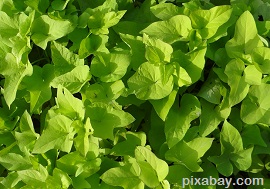
There’s also 114 calories in a cup of cubed sweet potatoes. On top of that, they’re delicious and can be cooked a number of different ways so that you don’t run the risk of food fatigue. Sweet potatoes store well in a cellar as long as you don’t wash them before storing them. They can last all winter.
Corn
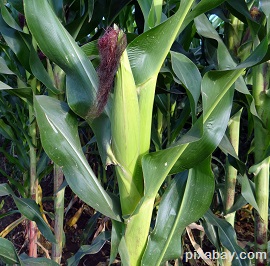
Corn also high in carotenoids, or antioxidants that help keep free radicals from causing disease. Finally, corn can be dried and ground into corn meal or corn flour that can be used to make everything from johnny cakes to corn bread and polenta. It’s a great addition to your survival garden.
Dry beans
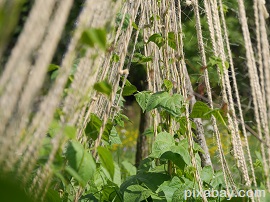
Some examples of beans include lentils, pintos, navy beans, peas, favas, soybeans and garbonzo beans. When dried, they store for several years as seeds and up to 2 years as a food source. Because some beans grow better in some locations than others, you’ll need to research what grows best in your area.
Winter squash
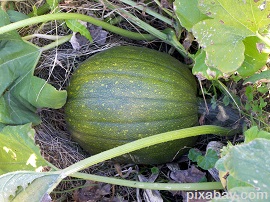
To store squash, you can can them or you can store them as-is in a shed or cellar just like you do potatoes. Check them every couple of weeks and discard ones that are starting to go bad.
Kale and collard greens
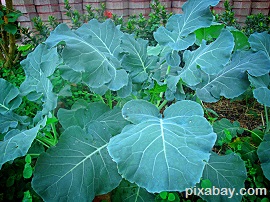
Kale and collard greens are packed with nutrients, the highest of which is calcium; one cup of cooked collard greens provides the same amount of calcium as a glass of milk. They’re also rich in vitamins A, C and K and have several different minerals in them that your body needs to survive.
Since both kale and collard greens are easy to can, you can store them almost indefinitely if you find yourself with too much raw greens to eat. They aren’t very high in calories though so pair them with potatoes, beans or other calorie-dense foods for a well-rounded meal that will stick to your ribs.
Cabbage
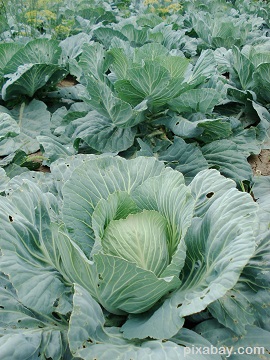
Cabbage is an excellent source of vitamins B6, C and K and also contains several minerals including manganese, folate and copper. It’s also a good source of potassium, vitamin B1 and dietary fiber. Since it can be cooked in a variety of ways with many different foods, it’s a good all-around survival food.
Spinach
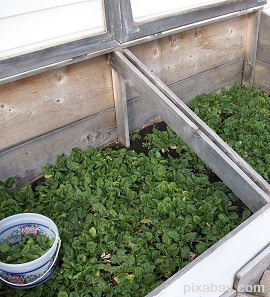
Just that list alone is impressive but when you add in the facts that it grows in very little space, can be picked over and over again, and stores well when canned, it’s an absolute must-have for your survival garden.
Spinach can be served fresh or can be sautéed down with a bit of olive oil (or bacon grease if you really want it to taste delicious). Toss in a bit of garlic and you’ve got a delicious side dish. You can also add it to just about any soup, stew, omelet, or sauce to add a bit of nutrition to all of your dishes without the kids even knowing it’s there.
Tomatoes
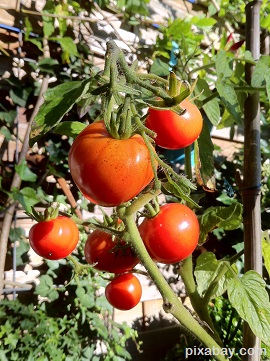
Tomatoes grow prolifically on vines that thrive even in vertical gardens so there’s no reason why you wouldn’t make them a part of your survival garden!
Garlic
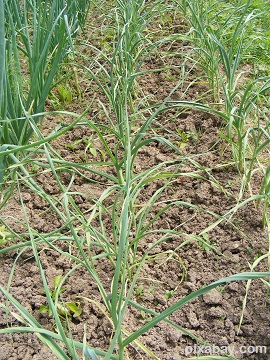
It’s an excellent source of B6 and manganese and is a good source of vitamin C, vitamin B1, calcium, phosphorus and selenium. Since it’s so versatile, it definitely makes our list of must-haves in your survival garden.
Other foods that deserve mention include broccoli, asparagus, onions and Brussels sprouts. Depending on your garden space and your storage area, you should make an effort to grow enough each year to get you through 2 years just in case disaster does strike. If you don’t have that much space, do what you can with what you have to work with.
We have some great articles on vertical gardening for those of you who don’t have much space. There’s really no reason why you can’t grow at least some of your own food regardless of where you live.
If you can think of anything that we left out or have anything else to add, please feel free to do so in the comments section below.
This article has been written by Theresa Crouse for Survivopedia.


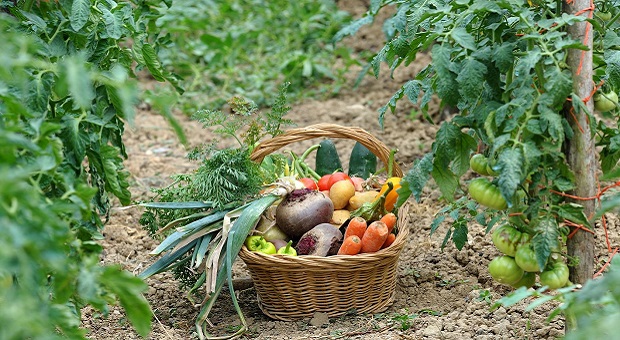






Hunkerdown | August 9, 2015
|
Just wanted to reinforce your advice on going vertical. It is indeed a game changer for the better. It is light years in abundance ahead of normal gardening. thanks for all you do to keep us fat out here. (lol) Seriously, thanks
Pingback:#144 - Stagflation, Addressing Being Replaced - Rational Survivor | August 10, 2015
|
Pingback:The Top 9 Most Nutritious Food For Your Survival Garden | TheSurvivalPlaceBlog | August 11, 2015
|
Pingback:Survival Prepping For The Vegetarian | Survival skills, survival guns, survival guide | September 13, 2015
|
Pingback:Survival Prepping For The Vegetariandisasterdefense.us | disasterdefense.us | September 14, 2015
|
Pingback:Survival Prepping For The Vegetarian | September 14, 2015
|
Paul | September 22, 2015
|
It’s useful to note that sweet potato greens are edible and highly nutritious. Also, a great alternative to spinach that will produce much more food in the same space, grow faster, provide “grain” and a strong stalk that beans can climb, is amaranth.
Wayne Taylor | September 25, 2015
|
Very good info. Your post are right on. Keep it coming.
Pingback:Basic Survival Food From Your Garden: Beans | Prepper's Survival Homestead | June 15, 2016
|
Pingback:Basic Survival Food From Your Garden: Beans | Survivopedia | June 17, 2016
|
John Cook | June 30, 2016
|
Enjoy the reading. Keep up the good work. Look forward to reading more articles from you.
Pingback:8 Signs That Predicts The Coming Food Crisis | Survivopedia | August 16, 2016
|
Pingback:Hidden Toxins In Everyday Life That Are Slowly Killing You | Survivopedia | September 12, 2016
|
Pingback:9 Myths About Surviving On A Budget Debunked | Survivopedia | September 19, 2016
|
Pingback:Store Bought to Home Grown – 6 Reasons to Grow Your Own Food | Survivopedia | July 7, 2017
|